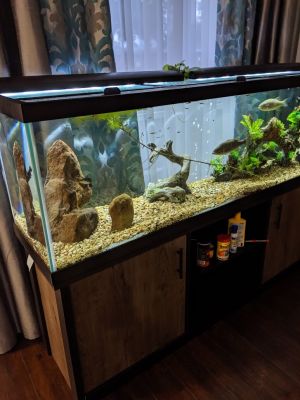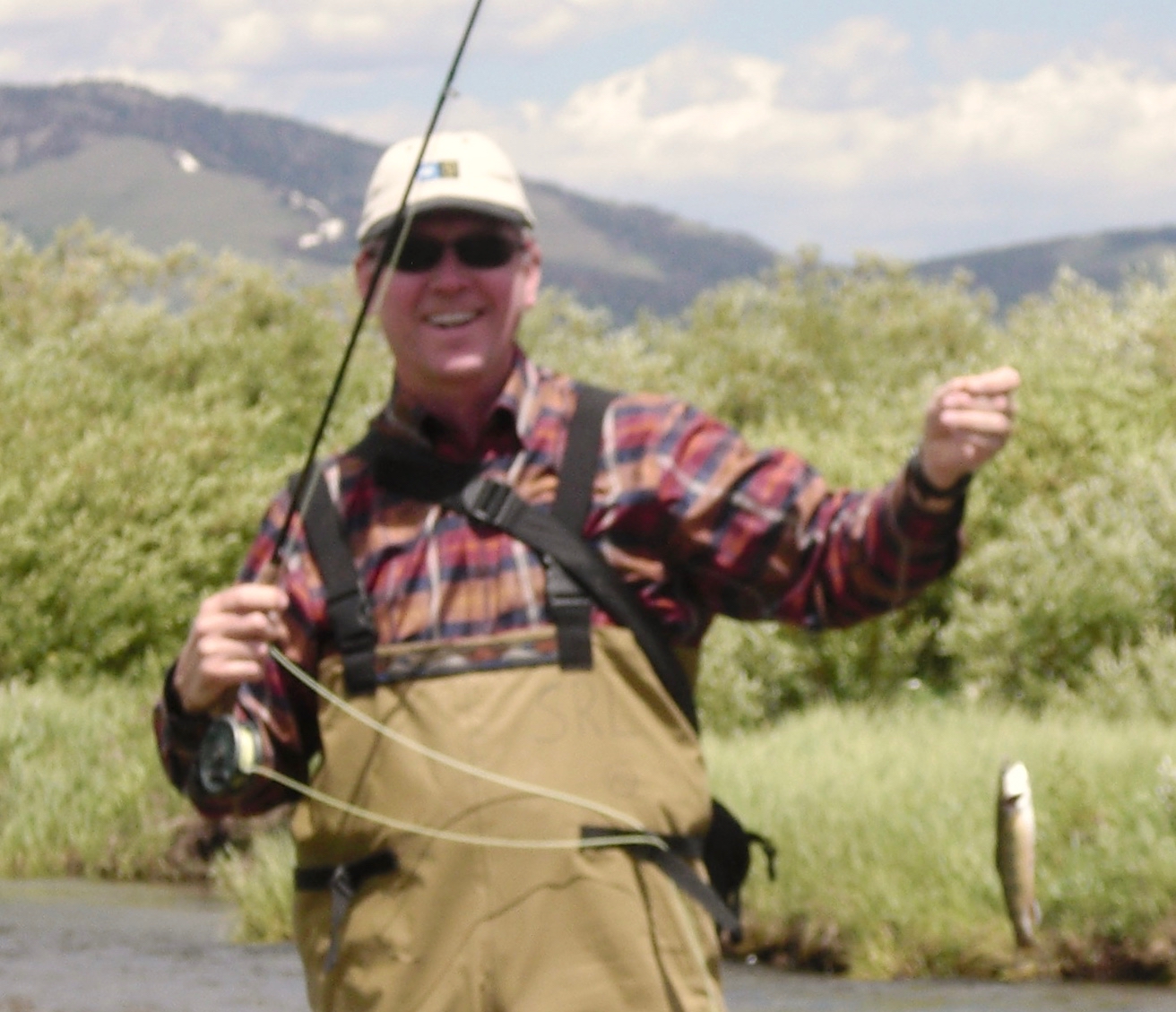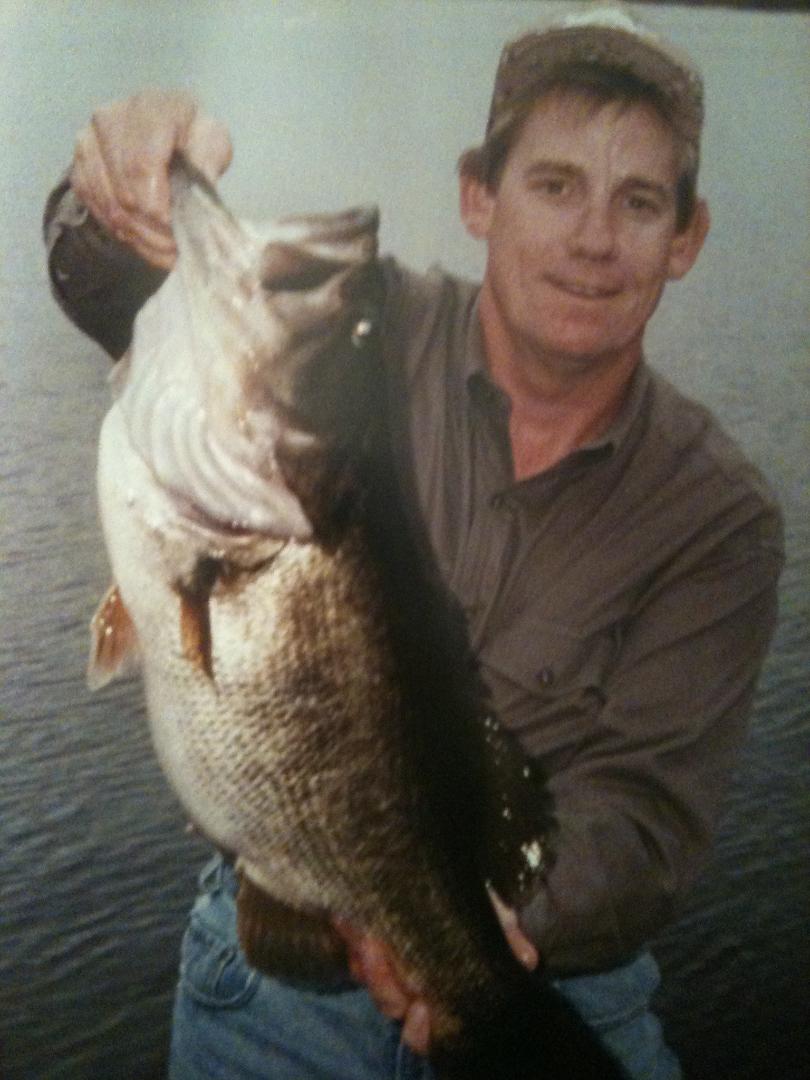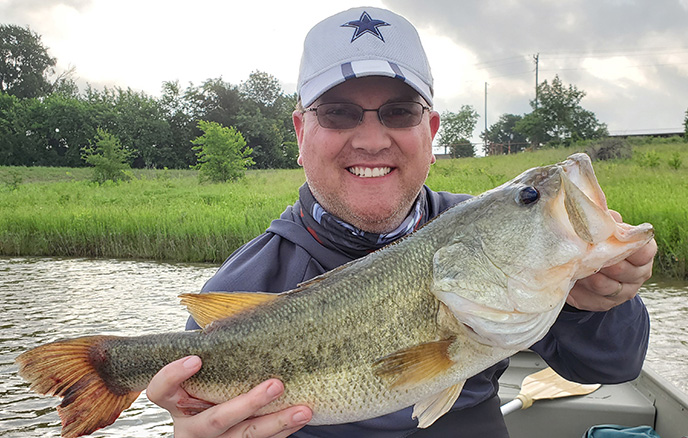Oct 22 2019
Jim Bennett
Slot Fish
Hi David,
Interesting question you raise. I do not have any scientific articles or studies, only empirical evidence. I have two F1 bass in a 125 gal aquarium, Buster and Bassoulli. Pic below. 
I acquired them in June this year and they were both 4 inches long, fast forward to present and Buster is 8" and Bassoulli is 8.5". So my son and I have watched them grow 4" in 4 months.
When we first put them in they would only eat earthworms. They would attack them from our fingers or any way you could get them in the tank. Later, we added small crays, less than 2" and they would gobble them before they reached bottom. We started using a fine mesh cast net to catch tiny 1-2" bluegill and they would eat 1 each per day, but would wait until the following day to eat any further. They would not touch crays or earth worms until the day following a bluegill meal as I suspect the bluegill are quite filling. Most recently we started adding 30-40 mosquito minnows per week. They will eat 4-5 each when we first put them in and consume about 8-10 per day now. But here is the interesting thing: They will not even touch an earthworm any more. Not even a second look. They rarely will eat a small bluegill any more. And they wont touch a small cray if there are mosquito minnows in the tank. I suppose if I stopped adding mosquito minnows they would revert back to the old forage.
So my empirical evidence is that once a bass gets into a pattern with an easy meal, it will not deviate from that pattern until it is forced.. The bass is simply not interested in anything else.
I translate this theory to Pecan Gap, where I have witnessed large bass attacking 4 inch+ bluegill when the feeders go off. I know from my aquarium experience those particular bass will not feed again for at least 24 hours. Maybe every bass is not so keen on bluegill, so those are probably the ones we occasionally catch on lures. If we wanted a good day of fishing I believe we could get the owner to turn off the feeders for a week or so, and have a field day with bluegill imitators.
I also witnessed this same thing recently at the Athens bass fishery scuba feed. If you get a chance, absolutely go watch that around 1 pm daily-Amazing if you are into bass biology. They have a range of fish in a glass walled pond that a scuba diver feeds daily, every thing from carp, gar, giant catfish, bluegill to bass, including a 17+ lb Share Lunker caught this year. What is amazing is that the diver pre-selects what forage will be released, in a specific order, and the larger fish automatically come forward when the appropriate size or color of forage is released. The share lunker was given a 5" bluegill. After letting dozens of other smaller bluegill swim by untouched, it engulfed the 5" bluegill from 1 foot away. Fast as lightning. This bass will now only eat 5" bluegill once per day and I suspect probably nothing else.
I strongly suspect this is true in the wild as well. The bigger fish have figured out the one thing they need to catch each day and that is all they worry about. Just stay cool and nap in the shade the rest of the time.
My two cents anyway.
Happy Lunkers,
Jim






Oct 12 2019
David May
Slot Fish
Member Since :
2018
Number of Posts :
136
I fish Pecan Gap quite a bit and of late there has been discussion regarding "too much forage" in the lake and that in turn resulting in a "less aggressive bite" relative to lakes with less forage. I have attempted to find some validation of this concept without success. There is of course an abundance of information on fish length to weight ratio as well as length to girth ratio obtained both from angled fish and survey fish. The actual tables published are the 75 percentile, not the 50th percentile I am told. Having said that, the owner of Pecan Gap told me that the electrosurvey of his lake does indicate his fish are "fatter" than the average in the area. There is also abundant literature on the target "ratio" of forage to bass which is geared toward the health of the fishery itself and makes no mention of the angling success in such situations
Pecan Gap is one of the properties with a lower fish per hour fished total than many (but not all) our properties.
And so, is anyone aware of any data (other than anecdote) that bass in a fishery with an abundance of forage are "less aggressive" or statistically less likely to be successfully angled than fish in fisheries with less forage?